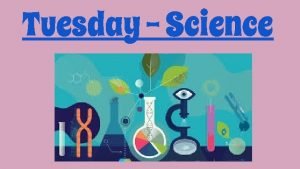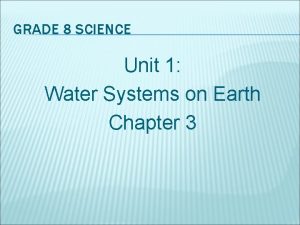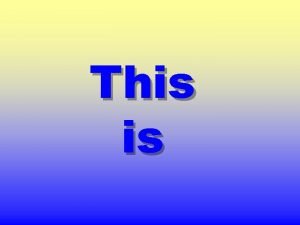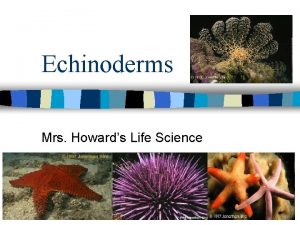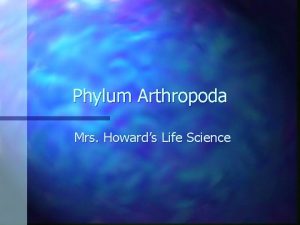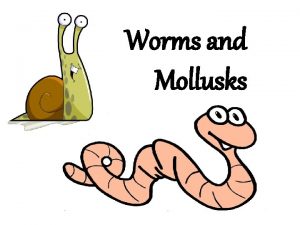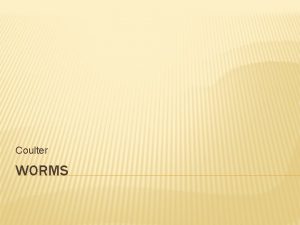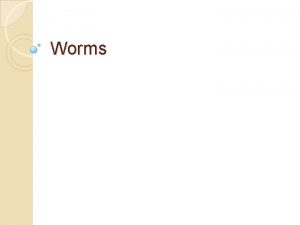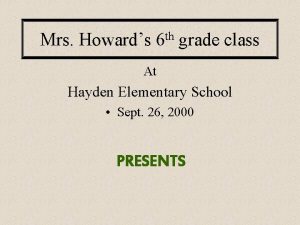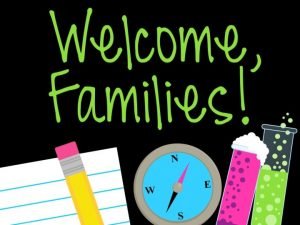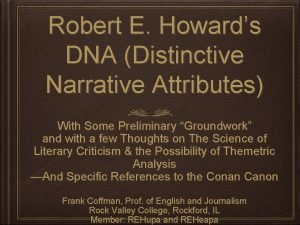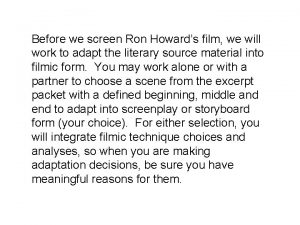Worms WORMS Mrs Howards Life Science Worms WORMS

















- Slides: 17

Worms, WORMS! Mrs. Howard’s Life Science

Worms, WORMS! Roundworms Flatworms Mrs. Howard’s Life Science Segmented worms Worm Lab Activity

Overview on Worms All worms have the following in common: l They are invertebrates l They all have long, narrow bodies without legs l Have tissues, organs, and organ systems l Bilateral symmetry l Unlike sponges or cnidarians, worms have distinct head and tail ends.

Worms! Worms can regenerate! Segmented worms - if broken, head will regenerate a tail l Flatworms if cut down the middle, will regenerate into 2 new worms l

Roundworms Phylum Nematoda l l l Protection - mouthparts Food - free-living & parasitic Habitat - everywhere Locomotion - muscle contractions Examples Pinworms, Hookworms, Heartworms, Trichinella

Roundworms Phylum Nematoda Special Characteristics l Digestive System l Nervous system l Brain & CNS l About 1/2 are parasitic

Flatworms Phylum Platyhelminthes l l l Planarian Protection mouthparts Food - most are parasitic & live off animals Habitat - water & land Locomotion - muscle contractions Examples - Planarian, Fluke, Tapeworm

Flatworms Phylum Platyhelminthes Special Characteristics Brain and CNS Mouth only (no anus) l

Segmented Worms Phylum Annelida Protection - they burrow and wedge inside hole l Food - Earthworms organic matter in soil Leeches- Blood of host l Habitat - Earthworms moist soil Leeches-Water and moist environments l

Segmented Worms Phylum Annelida Movement - Muscle contractions l Special Characteristics Brain and CNS Most are free-living (except leeches) Mouth & anus No heart but have circulatory system Above should read “breathe through their skin” l

Why do earthworms come to the surface when it rains? Bill Nye will answer: https: //www. youtube. com/watch? v=x. Wj. F 26 Qo QY 4

One final type of worm: There is one final type of worm, I forgot to mention: THE GUMMY WORM! CHARACTERISTICS • Colorful • Stretchy • Delicious : )

Gummy Worm Lab We are going to be observing the property of elasticity in a gummy worm. Using the Scientific Method we will determine how far a gummy worm can stretch and still retain its shape.

Gummy Worm Lab THE SCIENTIFIC METHOD Question or Problem: What is it we are trying to determine? l Hypothesis: Make an Educated Guess on what you think is going to happen? l Experiment: Test your Hypothesis l

Gummy Worm Lab Observations: Make careful observations and record what happens l Analysis: Use your experiment or research to draw conclusions. Was your hypothesis correct? l Results: Present your results by providing a summary of your experiment, hypothesis and conclusions. l

Gummy Worm Lab Specific Instructions are found on the lab handout - have fun!

 Was stand im brief von howards vater
Was stand im brief von howards vater They are mrs garcia and mrs castro
They are mrs garcia and mrs castro They are mrs garcia and mrs castro
They are mrs garcia and mrs castro Mrs. darling was ___________ of mrs. s.
Mrs. darling was ___________ of mrs. s. My favourite subject is pe
My favourite subject is pe Mrs gren stands for
Mrs gren stands for Mr c gren
Mr c gren Mrs bader grade 8 science
Mrs bader grade 8 science Natural vs social science
Natural vs social science Natural physical science
Natural physical science Natural science vs physical science
Natural science vs physical science Applied science vs pure science
Applied science vs pure science Natural science and social science similarities
Natural science and social science similarities Wwwk-6.thinkcentral
Wwwk-6.thinkcentral Tragedy of the commons
Tragedy of the commons Julie lundquist
Julie lundquist Soft science definition
Soft science definition Life science jeopardy
Life science jeopardy





